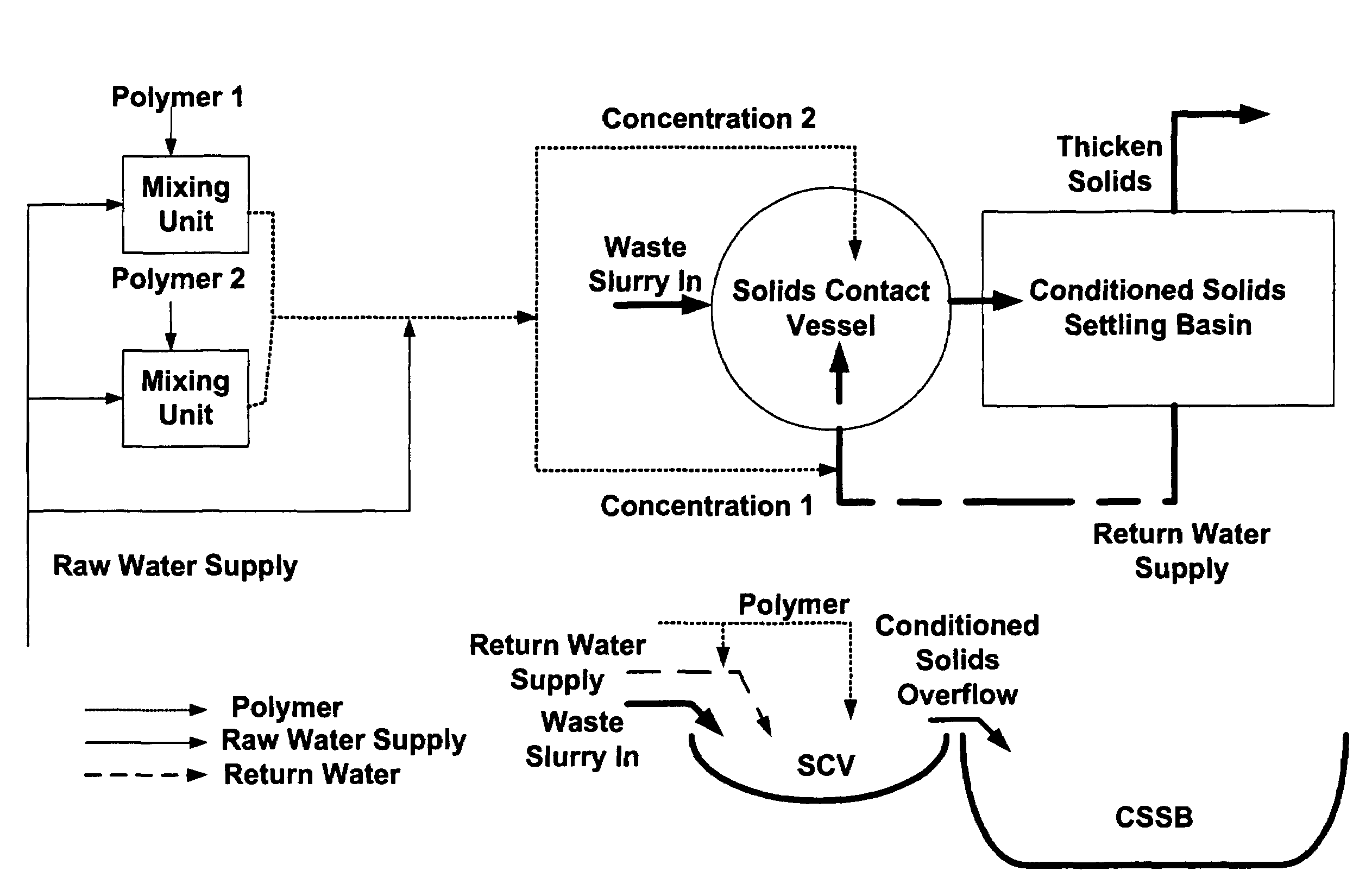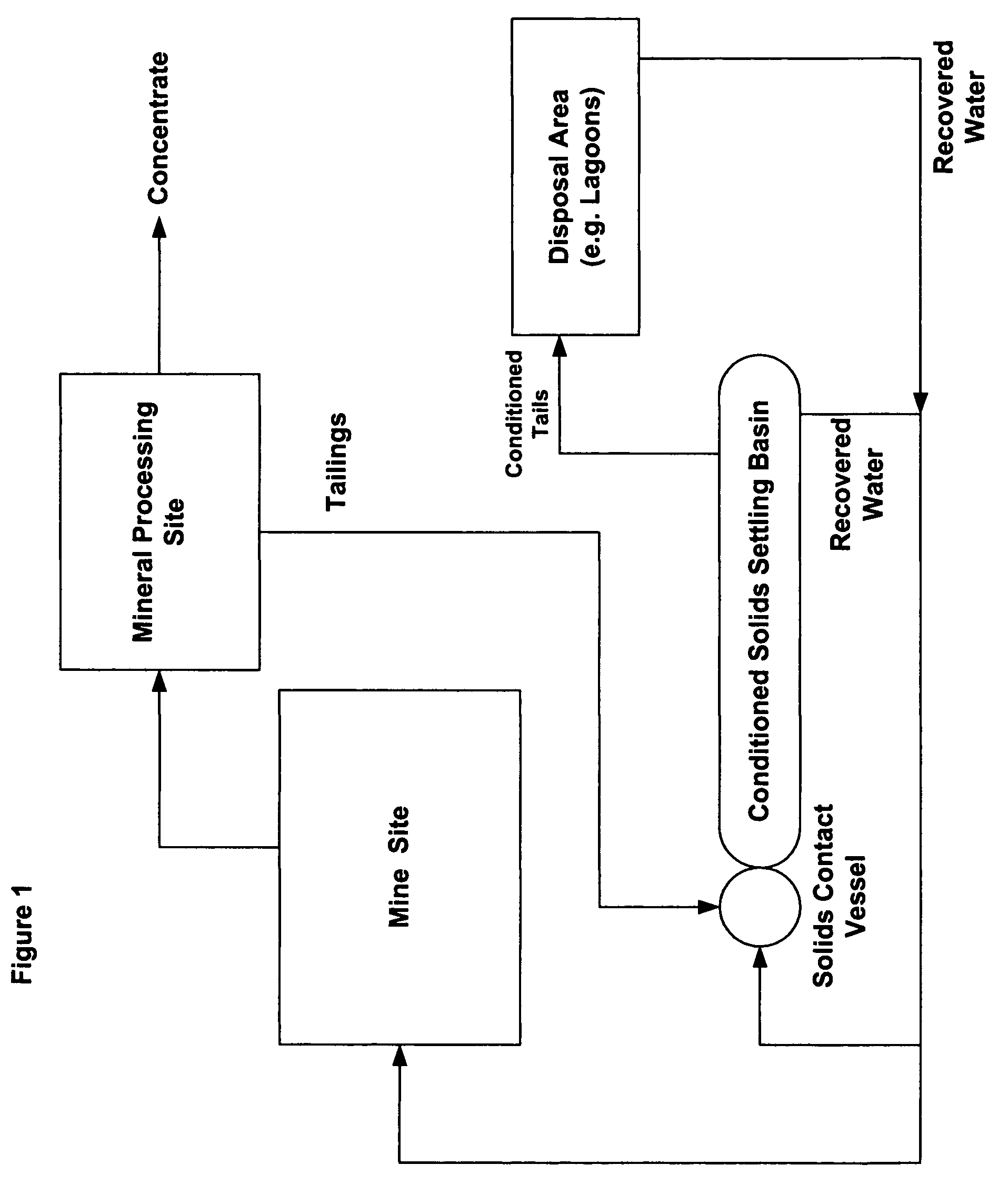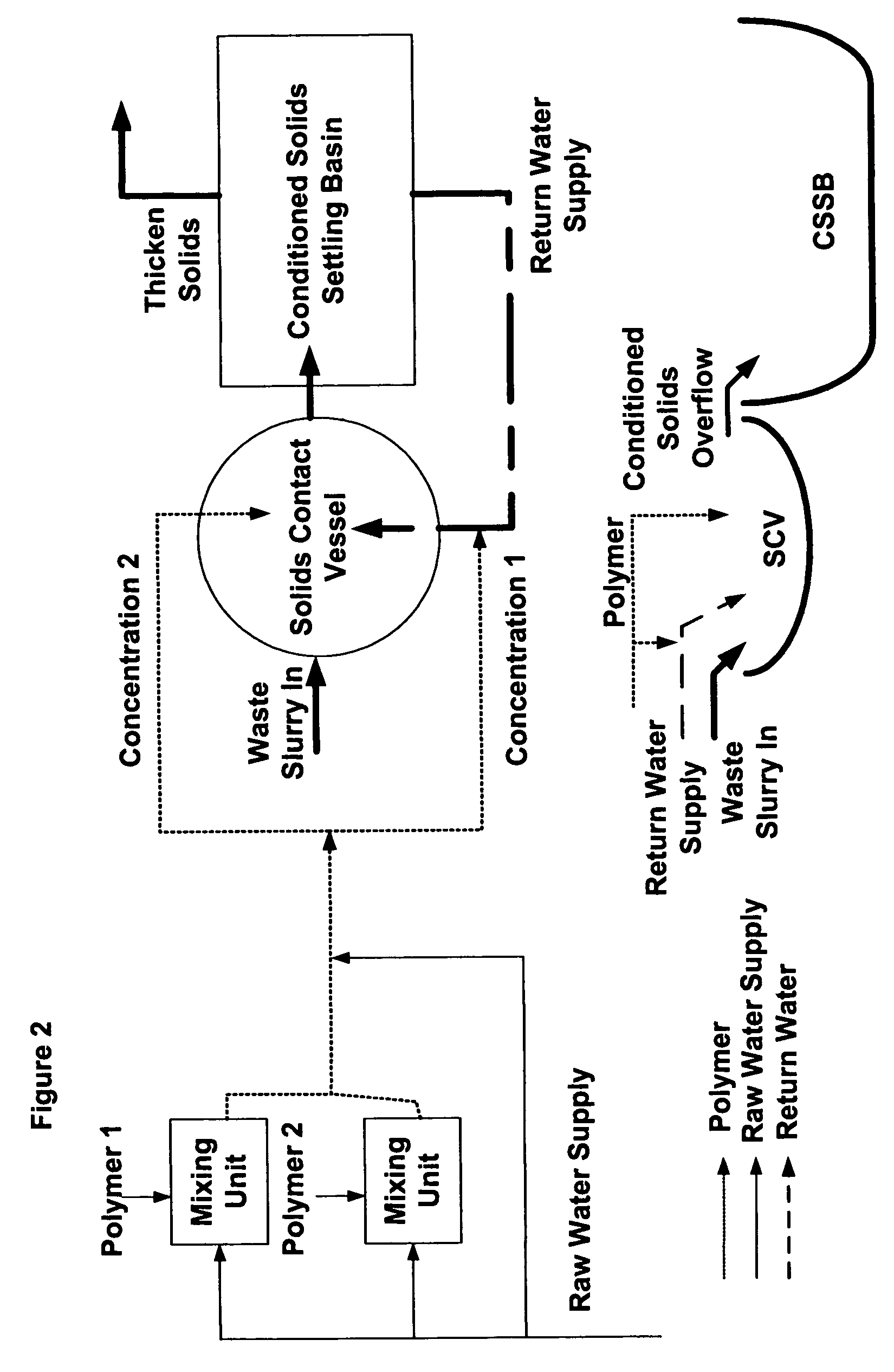Metals/minerals recovery and waste treatment process
a technology for mineral recovery and waste treatment, applied in the direction of water/sludge/sewage treatment, differential sedimentation, solid separation, etc., can solve the problems of high cost of use, poor supernatant quality, and complex separation process, etc., to achieve improved flocculation efficiency, improved flocculation efficiency, and improved water dilution ratio
- Summary
- Abstract
- Description
- Claims
- Application Information
AI Technical Summary
Benefits of technology
Problems solved by technology
Method used
Image
Examples
example 1
[0104]The results detailed in this example detail how three different methods of flocculant addition perform on a sample of phosphatic clay. Each table represents use of a different flocculant product to further illustrate that the performance improvements obtained by using the dual concentration method of addition are not limited to an isolated case and that the performance benefits are achieved with each evaluation.
[0105]
Flocculant; MAGNAFLOC ® 336FlocculantSupernatantAdditionDoseSettlementUnderflowTurbidity,Methodppmlbs / TRate, in / minVolume, mlNTU*Conventional20.480.2038079040.960.7820033561.445.97120179High Dilution -10.481.96220141Single1.50.723.48165102Concentration20.966.6912093High Dilution -10.488.6810082Dual1.50.7219.089059Concentration20.9647.248071*NTU = Nephelometric Turbidity Units
[0106]
Flocculant; MAGNAFLOC ® 4240FlocculantSupernatantAdditionDoseSettlementUnderflowTurbidity,Methodppmlbs / TRate, in / minVolume, mlNTUConventional30.721.5827035440.964.1212023451.207.91110149...
example 2
[0113]Using the dual addition technique described above, the following results detail the effect of applying two different flocculants blended at various ratios:
[0114]
ProductSettlementUnderflowSupernatantProductCombinationDoseRate,Volume,Turbidity,ABRatio (A:B)ppmlbs / Tin / minmlNTUMAGNAFLOCDP203-100:0 1.50.634.15160184336983220.845.991501642.51.0512.99130130 0:1001.50.634.2017012720.846.621401142.51.0511.991308975:251.50.633.052207320.847.871401362.51.0514.6013010960:401.50.633.4019017120.8412.35120992.51.0517.8412010150:501.50.633.2819016420.849.691301132.51.0517.5813010240:601.50.632.9520016320.847.151501312.51.0512.981309525:751.50.634.1217014120.846.301501232.51.0511.5913092
[0115]The results below detail the conditions required to achieve a 6 in / min. settlement rate.
[0116]
ProductSupernatantProductCombinationDose,UnderflowTurbidity,ABRatio (A:B)lbs / TVolume, mlNTUMagnaflocDP203-100:0 0.841501643369832 0:1000.8014411775:250.76216412160:400.68616414950:500.7216013940:600.78516113925:7...
example 3
[0119]
Iron Ore - Using MAGNAFLOC ® 370FlocculantSupernatantAdditionDoseSettlementUnderflowTurbidity,Methodppmlbs / TRate, in / minVolume, mlNTUConventional1.000.053.38652471.500.074.76601212.000.105.2670111High Dilution -0.500.055.9970135Single0.750.076.3670110Concentration1.000.106.807076High Dilution -0.500.056.0170124Dual0.750.077.6270102Concentration1.000.109.006556
[0120]The results in the above table indicate that the dual concentration method of addition achieves improved both settlement rate and supernatant turbidity
PUM
| Property | Measurement | Unit |
|---|---|---|
| diameter | aaaaa | aaaaa |
| residence time | aaaaa | aaaaa |
| residence time | aaaaa | aaaaa |
Abstract
Description
Claims
Application Information
 Login to View More
Login to View More - R&D
- Intellectual Property
- Life Sciences
- Materials
- Tech Scout
- Unparalleled Data Quality
- Higher Quality Content
- 60% Fewer Hallucinations
Browse by: Latest US Patents, China's latest patents, Technical Efficacy Thesaurus, Application Domain, Technology Topic, Popular Technical Reports.
© 2025 PatSnap. All rights reserved.Legal|Privacy policy|Modern Slavery Act Transparency Statement|Sitemap|About US| Contact US: help@patsnap.com



